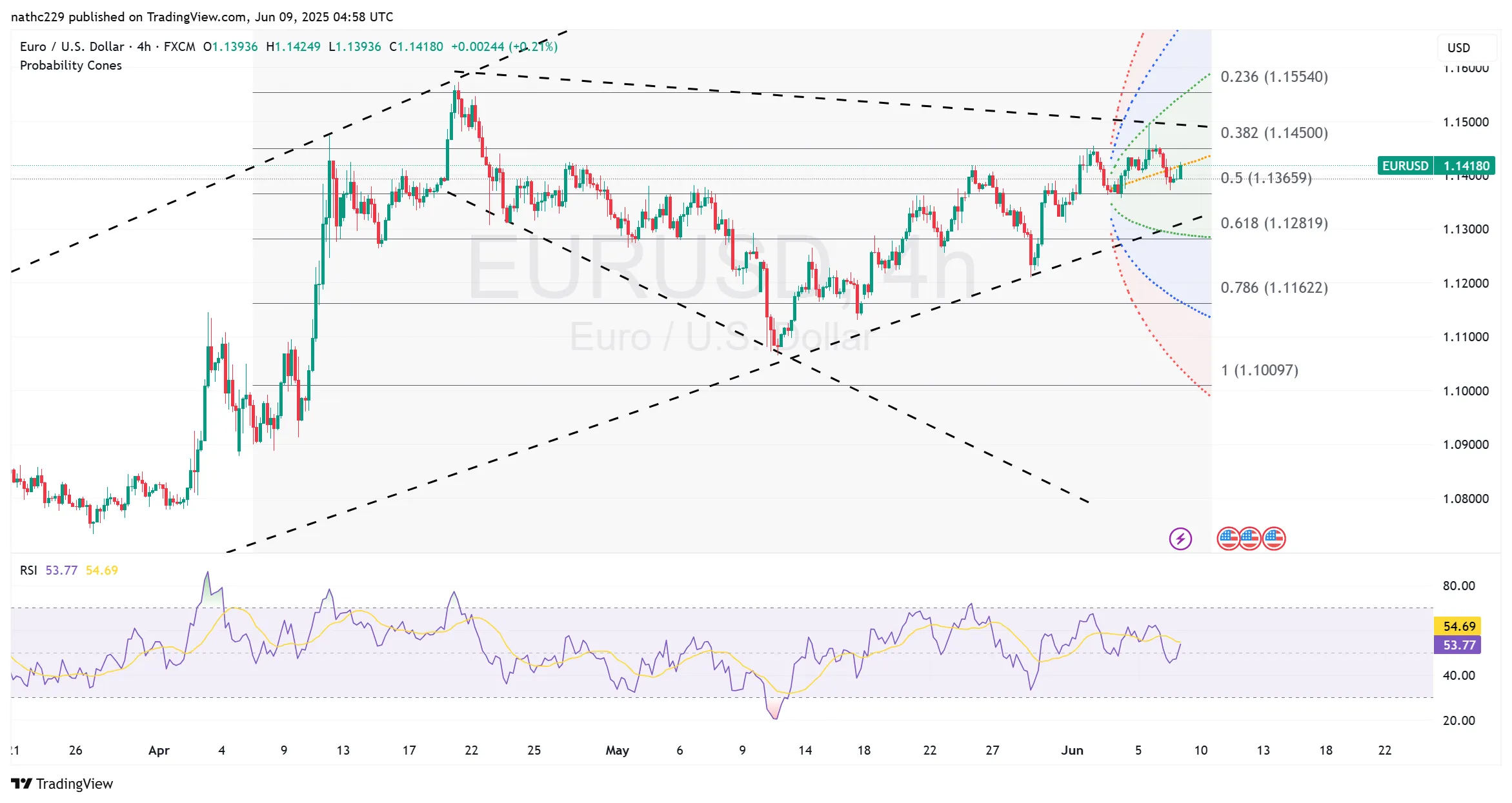
EUR/USD bulls on shaky ground after robust U.S. jobs data sparks dollar rally, yields surge
EUR/USD bulls on shaky ground after robust U.S. jobs data sparks dollar rally, yields surge
Technical Analysis:
EUR/USD finished sharply lower on Friday, driven by stronger-than-anticipated U.S. non-farm payrolls data, which dampened expectations for aggressive Federal Reserve easing and enhanced the dollar’s yield advantage. Payrolls grew by 139,000 in May, above the 130,000 consensus forecast, while the unemployment rate remained steady at 4.2%. More notably, average hourly earnings rose to +0.4% month-on-month and +3.9% year-on-year, surpassing market expectations. These resilient figures lifted U.S. Treasury yields across the curve as investors scaled back bets on imminent Fed rate cuts, resulting in widening German-U.S. two-year yield spreads and boosting demand for U.S. dollar-denominated assets.
From a technical perspective, EUR/USD bears gained clear momentum, evident from Friday’s sharp decline from an intraday peak at 1.1458, dropping below the crucial 5-day moving average near 1.1410 to settle around 1.1385 late in New York trading. The daily chart formed a bearish confirmation following Thursday’s inverted hammer candle, reinforcing the recent shift in market sentiment. Daily RSI indicators have notably turned downward, highlighting fading bullish momentum. Immediate technical support now lies near the day’s low at 1.1372, with deeper support found around the 21-day moving average at approximately 1.1345, aligned closely with the daily Ichimoku cloud top, which has historically provided robust technical backing.
Next week’s U.S. economic releases—including jobless claims, CPI, and PPI for May—hold potential to further influence EUR/USD price action. Should data confirm continued economic resilience or even higher-than-expected inflation, markets would likely price out further Fed easing, spurring additional dollar demand. In this scenario, EUR/USD may break decisively below its 21-day moving average and challenge key support at the psychological 1.1300 level. Conversely, weaker U.S. data could restore some bullish sentiment, with EUR/USD bulls aiming to regain the 1.1450–1.1500 resistance zone to reassert their longer-term upward trend.
